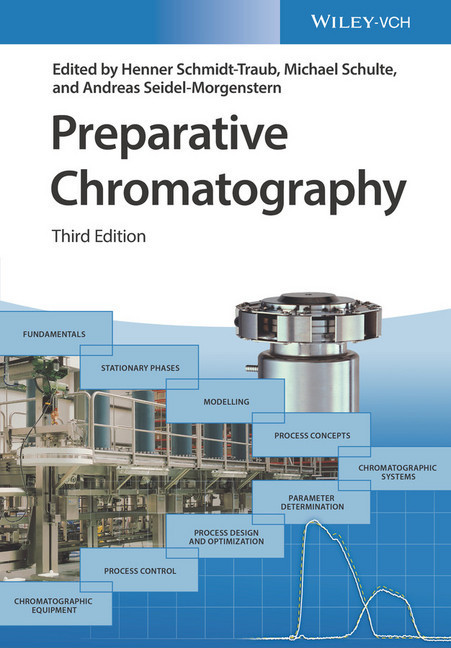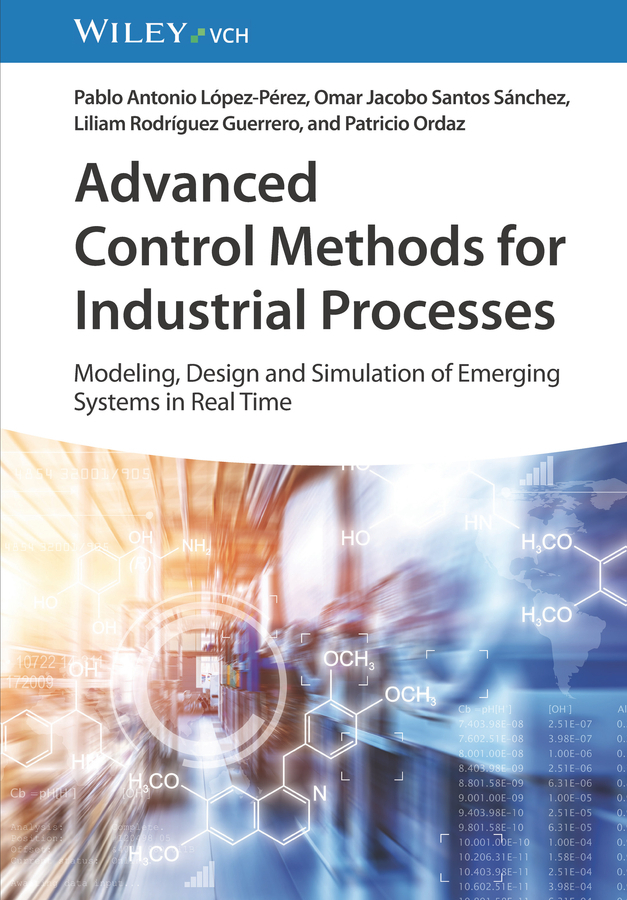Protein Chromatography
Process Development and Scale-Up
Protein Chromatography
Process Development and Scale-Up
An all-in-one practical guide on how to efficiently use chromatographic separation methods
Based on a training course that teaches the theoretical as well as practical aspects of protein bioseparation to bioprocess professionals, this fully updated and revised new edition offers comprehensive coverage of continuous chromatography and provides readers with many relevant examples from the biopharmaceutical industry.
Divided into two large parts, Protein Chromatography: Process Development and Scale-Up, Second Edition presents all the necessary knowledge for effective process development in chromatographic bioseparation, both on small and large scale. The first part introduces chromatographic theory, including process design principles, to enable the reader to rationalize the set-up of a bioseparation process. The second part illustrates by way of case studies and sample protocols how the theory learned in the first part may be applied to real-life problems. Chapters look at: Downstream Processing of Biotechnology Products; Chromatography Media; Laboratory and Process Columns and Equipment; Adsorption Equilibrium; Rate Processes; and Dynamics of Chromatography Columns. The book closes with chapters on: Effects of Dispersion and Rate Processes on Column Performance; Gradient Elution Chromatography; and Chromatographic Column Design and Optimization.
-Presents the most pertinent examples from the biopharmaceutical industry, including monoclonal antibodies
-Provides an overview of the field along with design tools and examples illustrating the advantages of continuous processing in biopharmaceutical productions
-Focuses on process development and large-scale bioseparation tasks, making it an ideal guide for the professional bioengineer in the biotech and pharma industries
-Offers field-tested information based on decades of training courses for biotech and chemical engineers in Europe and the U.S.
Protein Chromatography: Process Development and Scale-Up, Second Edition will appeal to biotechnologists, analytical chemists, chromatographers, chemical engineers, pharmaceutical industry, biotechnological industry, and biochemists.
Preface
Based on a training course that teaches the theoretical as well as practical aspects of protein bioseparation to bioprocess professionals, this fully updated and revised new edition offers comprehensive coverage of continuous chromatography and provides readers with many relevant examples from the biopharmaceutical industry.
Divided into two large parts, Protein Chromatography: Process Development and Scale-Up, Second Edition presents all the necessary knowledge for effective process development in chromatographic bioseparation, both on small and large scale. The first part introduces chromatographic theory, including process design principles, to enable the reader to rationalize the set-up of a bioseparation process. The second part illustrates by way of case studies and sample protocols how the theory learned in the first part may be applied to real-life problems. Chapters look at: Downstream Processing of Biotechnology Products; Chromatography Media; Laboratory and Process Columns and Equipment; Adsorption Equilibrium; Rate Processes; and Dynamics of Chromatography Columns. The book closes with chapters on: Effects of Dispersion and Rate Processes on Column Performance; Gradient Elution Chromatography; and Chromatographic Column Design and Optimization.
-Presents the most pertinent examples from the biopharmaceutical industry, including monoclonal antibodies
-Provides an overview of the field along with design tools and examples illustrating the advantages of continuous processing in biopharmaceutical productions
-Focuses on process development and large-scale bioseparation tasks, making it an ideal guide for the professional bioengineer in the biotech and pharma industries
-Offers field-tested information based on decades of training courses for biotech and chemical engineers in Europe and the U.S.
Protein Chromatography: Process Development and Scale-Up, Second Edition will appeal to biotechnologists, analytical chemists, chromatographers, chemical engineers, pharmaceutical industry, biotechnological industry, and biochemists.
Preface
DOWNSTREAM PROCESSING OF BIOTECHNOLOGY PRODUCTS
Introduction
Bioproducts and their Contaminants
Bioprocesses
Biosimilars
Role of Chromatography in Downstream Processing
Environmental Impact of Biopharmaceutical Processing
References
INTRODUCTION TO PROTEIN CHROMATOGRAPHY
Introduction
Basic Principles and Definitions
Modes of Operation
Performance Factors
Separation Performance Metrics
CHROMATOGRAPHY MEDIA
Introduction
Interaction Types and Chemistry
Buffers and Mobile Phases
Physical Structure and Properties
LABORATORY AND PROCESS COLUMNS AND EQUIPMENT
Introduction
Laboratory-scale Systems
Process Columns and Equipment
ADSORPTION EQUILIBRIUM
Introduction
Single Component Systems
Multi-component Systems
Empirical Correlation of Equilibrium Data
References
RATE PROCESSES
Introduction
Rate Mechanisms
Batch Adsorption Kinetics
DYNAMICS OF CHROMATOGRAPHY COLUMNS
Introduction
Material Balance Equations
Local Equilibrium Dynamics
Multi-component Systems
Displacement Chromatography
EFFECTS OF DISPERSION AND RATE PROCESSES ON COLUMN PERFORMANCE
Introduction
Empirical Characterization of Column Efficiency
Modeling and Prediction of Column Efficiency
GRADIENT ELUTION CHROMATOGRAPHY
Introduction
General Theory for Gradient Elution with Linear Isotherms
LGE Relationships and the Iso-Resolution for Ion Exchange Chromatography
LGE Relationships for RPC and HIC
Gradient Elution at High Protein Loads
Separations with pH Gradients
References
CHROMATOGRAPHIC COLUMN DESIGN ADN OPTIMIZATION
Introduction
Chromatographic Process Steps and Constraints
Design for Capture
Design for Chromatographic Resolution
SMB Design
References
INDEX
| ISBN | 9783527346660 |
|---|---|
| Artikelnummer | 9783527346660 |
| Medientyp | Buch |
| Auflage | 2. Aufl. |
| Copyrightjahr | 2020 |
| Verlag | Wiley-VCH |
| Umfang | XVIII, 410 Seiten |
| Abbildungen | 150 SW-Abb. |
| Sprache | Englisch |










